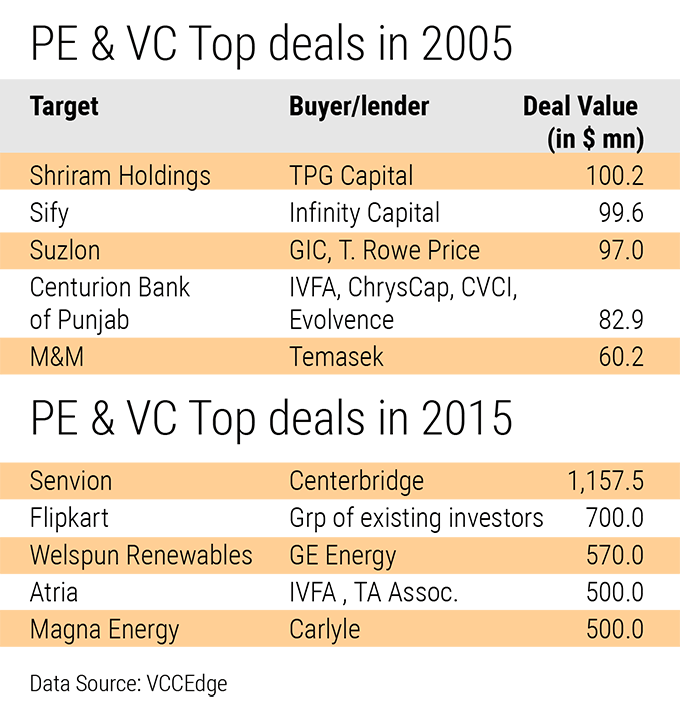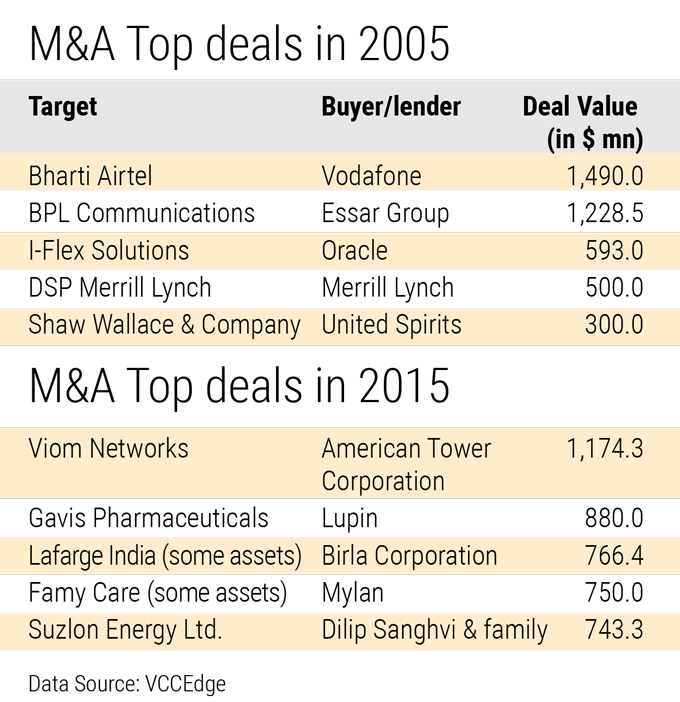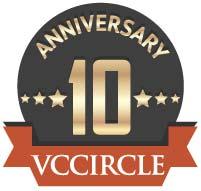Ten years is a long time, especially in the life of a startup. When VCCircle began in 2005, India’s startup ecosystem was at a nascent stage and venture capital and private equity firms were just beginning to make their presence felt. There was a need for reliable information and insight into the opaque world of private investment, a void that VCCircle has tried to fill. As VCCircle commemorates its decade-long journey, it finds itself in the middle of an entrepreneurial revolution. As part of our 10th anniversary, we look back into the decade gone by through a series of articles and slideshows as well as columns by well-known entrepreneurs and investors.
In this first article, we find out how dealmaking has changed over the past decade.
A lot has changed in the past 10 years on deal street. Although big deals today would perhaps still look similar in size to what they were a decade ago, the contours of dealmaking have changed dramatically.
Early-stage venture funding -- almost non-existent back then -- has become the prime mover of deals, legacy sectors that hogged the limelight in big deals have matured and new-age tech firms often with little, if any, assets dominate corporate dealmaking.
As VCCircle turns 10 this week, we look back at the decade gone by and how deal making has changed in India.
So what has changed? Not much if we look at the top M&A deals (click on the M&A tab below). Indeed, India Inc saw bigger deals led by inbound acquisitions in 2005 than they have struck this year. But the sectors where the blockbuster deals happened have changed.
The big changes have been in the private investment side where the deal drivers have changed dramatically, as per data collated by VCCEdge, the data research platform of VCCircle.
Here's a look at how acquisitions and private capital raising transactions have moved over the years.
While the number of private investment deals led by venture capital and angel investments has hit a record high, larger size private equity deals have remained stunted. This is partly to do with anaemic returns generated by PE firms, who were more aggressive in the early part of the last decade when the investment frenzy was at the last lap before the global financial crisis hit the corporate world, the stock markets and dealmaking at large.
However, frenetic activity in venture funding in particular and few significant PE deals -- including few with India link even if the firm itself is based overseas -- has still managed to push overall funding value close to its all-time high in 2007. With a few weeks to go, if there are a few large PE investments, India may well match up to the all-time high in announced deal value.
While private investors led by growth equity PE firms were not even striking a deal a day, they are now finalizing an investment every four hours. The aggregate value of announced deals has risen almost eight times in the same period.
The average deal size has doubled, though it is yet to regain the highs of 2007-08. Meanwhile, the median deal value -- which captures the mid-point of all deals stacked up in an order and is more representative of the general deal flow -- has halved. This is to do with hectic pace of early-stage investments that dominates private funding transactions today.

But the big-ticket PE deals have gained pace, especially this year with several marquee investors striking their single-biggest transactions in the country.
A peek at the top deals then and now shows how the sectors of action have moved and how the PE firms are open to signing big cheques.
The M&A landscape
Although M&A dealmaking has also taken flight compared to 10 years ago, it is now in a steady state with a little over two deals a day for the past few years. The aggregate deal value has also doubled but is still a pale shadow of the past when big-ticket overseas buys by Tatas, Birlas and Mittals and big in-bound deals by Vodafone, Abbott and others put India on the global M&A map.
Meanwhile, as big-ticket deals dried up, the average deal sizes have barely nudged up.
But more than the deal value and volumes, the interesting change over the past 10 years is the mix.
While 2005 was dominated by telecom deals, the mix has changed to engineering and pharmaceuticals. However, the biggest M&A deal announced this year also revolves around telecom -- telecom towers to be precise.

The transaction values of the top deals almost mirror those a decade ago. Indeed, the biggest deal this year is of a smaller value compared to the chartbuster of 2005.
Domestic transactions remain the driver of M&As and have become even more significant accounting for close to two-thirds of the total while outbound deals have more than halved from one in three in 2005. This shows the flaking risk appetite of inorganic expansion overseas as several past deals sank fortunes of Indian firms or their promoters.





